Winter Rain and Some Random Farm Photos
/Rusty wrote in his blog a couple days ago about his own private lake in front of the barn. Once it stopped raining, the water in this area drained off quickly. 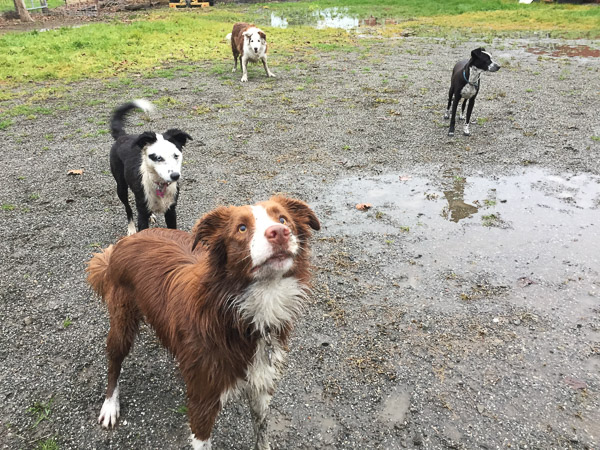 The next evening things were back to normal near the barn.
The next evening things were back to normal near the barn.
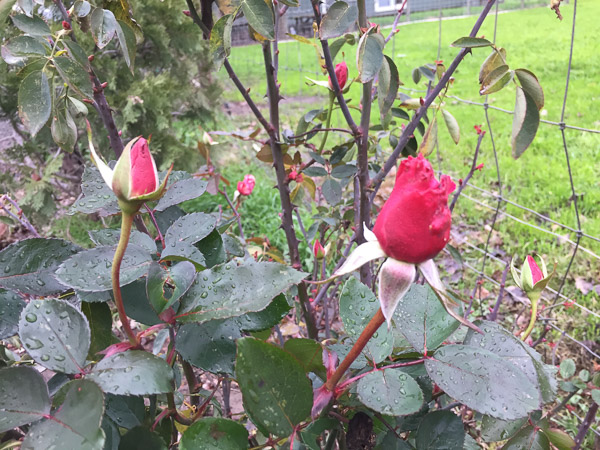
This isn't so normal. Why in the world is this rose choosing to bloom now, in January?)

This scene is normal behind the barn in a winter when we have rain. The sheep avoid the deep mud when given a chance. Another storm was due to come in.
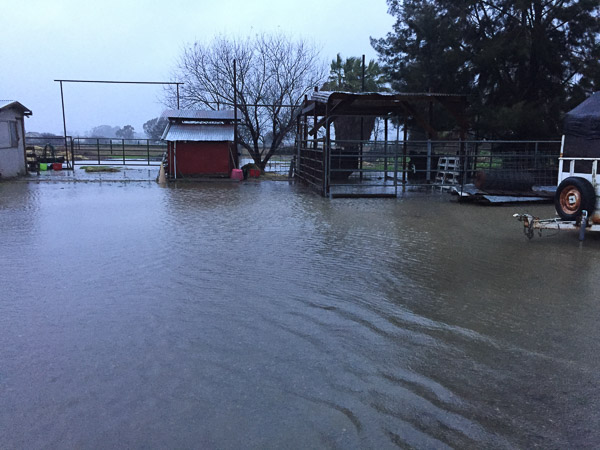
And it was a doozy. I haven't seen water like this here in several years.
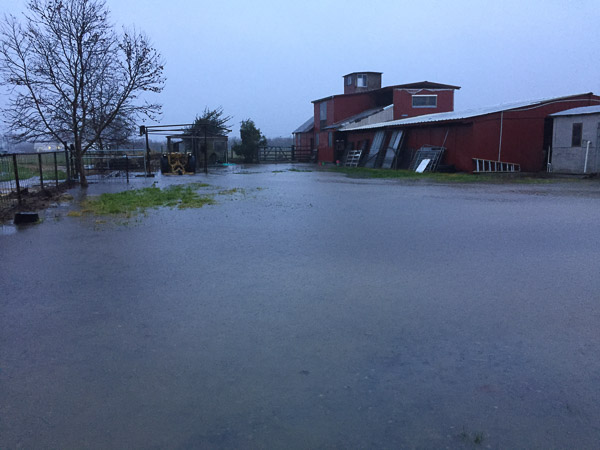
This is the area where the dogs were standing in the first photo. Fortunately the barn and those smaller buildings stay just out of the water.
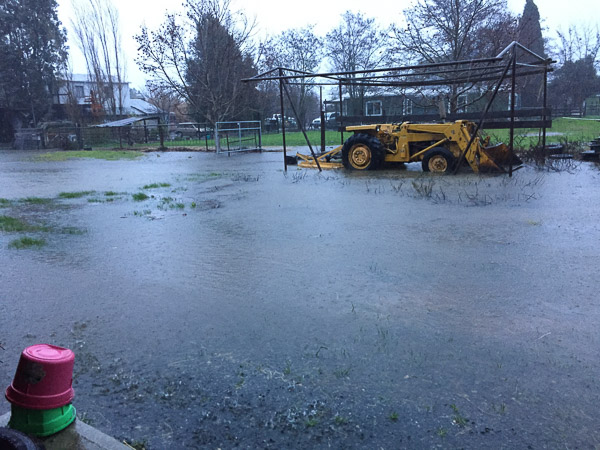
For anyone who has seen what this is normally like these photos are dramatic, but we really can't complain. The shop (behind the tractor) and the houses (out of sight here) are built up off the ground so we don't worry about water inside them. We have never had to worry about the serious flooding that other people have. It is especially amazing to realize that this is not water from a creek overflowing or a levee breaking. It is just a lot of rain over a period of days on flat land that is already water-logged. Some of this water comes from the property to the north because the only drainage is at the southeast corner of our property (see this post).
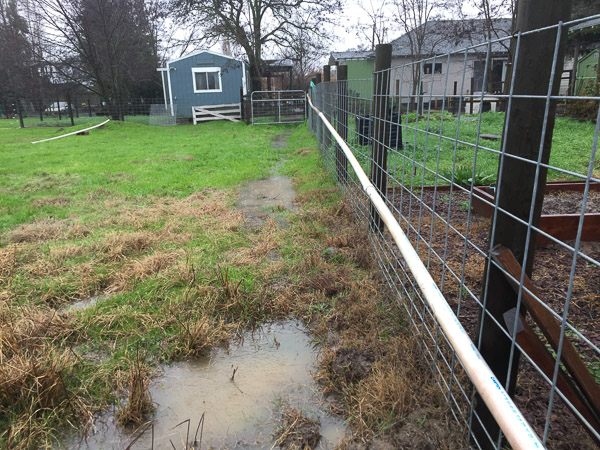
One problem we have is that our cellar floods when the ground water is high and that's where our water heater is. We keep a pump going but during yesterday's storm I decided that I really need to reroute the water somwhere other than this field because it's too close to the houses and seeping back in, as well as causing trouble with the septic system for the other house. So I wired this PVC pipe to the fence at an angle and put the hose from the pump in the upper end.
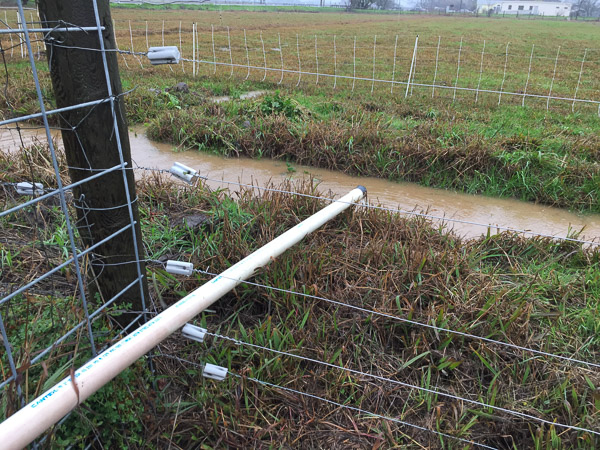
Now that water drains into the ditch which is taking water away from the houses. It's really just a drop in the bucket (uh...no pun intended) but it makes me feel like I did something pro-active in the face of all this rain.The pump hasn't turned off in at least 36 hours as it continues to try and drain the cellar.
Today the sun was out, the driveway and the area that looks like a lake in the upper photos have mostly drained. I taught a weaving class today...
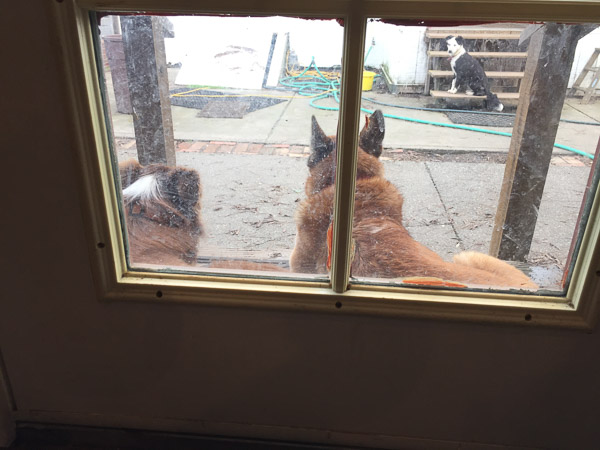
...and when I'm in the shop the dogs take turns at the spot by the door.
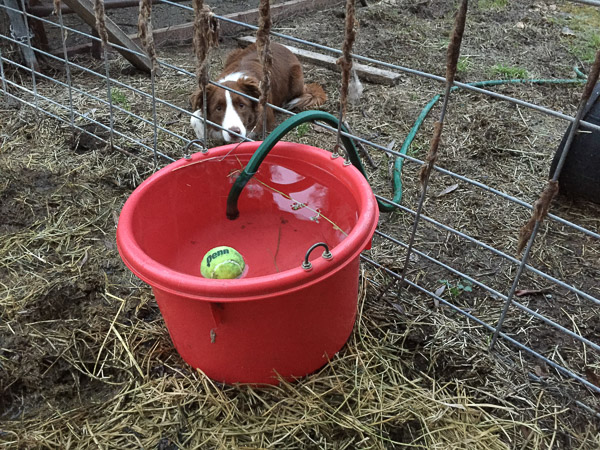
This is from tonight while doing chores. I cleaned the ram shed and while I was in their pen Ginny tried to get my attention. She succeeded. Drop the ball in the water through the fence and chances are I'll get it out for her.

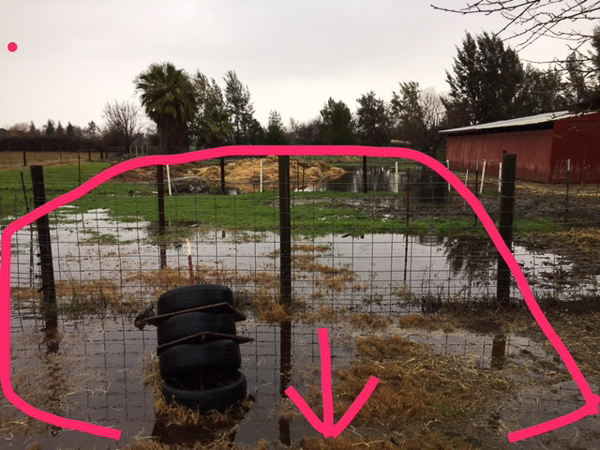 The first thing you'll notice in this photo is the pink line. That's my new discovery--that I can draw on my photos!!! Yippee! More fun with photos! I'll try not to overdo it once I'm done with this post. The pink outlines the waterlogged wet area behind the barn, around the Mt. Meridian (the compost/manure pile). The arrow indicates how that water eventually has to drain IF it can flow away. Or it eventually evaporates or soaks into the ground. That is a slow process with our clay soil that is already waterlogged.
The first thing you'll notice in this photo is the pink line. That's my new discovery--that I can draw on my photos!!! Yippee! More fun with photos! I'll try not to overdo it once I'm done with this post. The pink outlines the waterlogged wet area behind the barn, around the Mt. Meridian (the compost/manure pile). The arrow indicates how that water eventually has to drain IF it can flow away. Or it eventually evaporates or soaks into the ground. That is a slow process with our clay soil that is already waterlogged.








